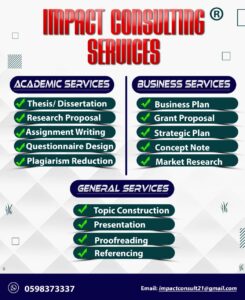How to Write a Thesis Statement for a Research Paper in 2024: Steps and Examples

Introduction: Mastering the Art of Crafting a Thesis Statement in 2024
A. Definition and Importance of a Thesis Statement
In the realm of academic research, especially when exploring how to write a thesis statement in 2024, understanding its definition and significance is crucial. A thesis statement is a concise summary of the main point or claim of a research paper. It is usually one sentence long and presents the topic of your research and your position on it. This statement is fundamental because it guides the direction of your research and writing, acting as a roadmap for both you and your readers. It helps to organise and develop your argument or analysis, setting the tone for the entire paper.
B. The Relevance of Thesis Statements in 2024’s Research Landscape
In the evolving research landscape of 2024, the role of a thesis statement remains as pivotal as ever. With the influx of information and the increasing complexity of research topics, a well-crafted thesis statement has become essential. It enables researchers to present their work clearly and succinctly in an era where brevity and clarity are highly valued. A strong thesis statement helps your paper stand out in a sea of academic research by providing a clear point of focus and argument. It’s not just about stating a topic; it’s about presenting a perspective that adds to the ongoing conversation in your field. In 2024, where academic writing is more competitive and dynamic, crafting an effective thesis statement is a skill that every researcher needs to master.
Decoding the Key Components of a Thesis Statement in 2024
In the process of understanding how to write a thesis statement in 2024, it’s essential to grasp the core components that make a thesis statement effective. These components are clarity and conciseness, arguability, specificity, and relevance to research.
A. Clarity and Conciseness
The clarity of your thesis statement is crucial. It should be straightforward and easily understandable. A clear thesis statement directly communicates the essence of your research without the need for additional explanation. Alongside clarity, conciseness is equally important. A thesis statement should be brief yet comprehensive. It needs to convey your main idea without being overly wordy. In 2024, with the abundance of information available, the ability to present complex ideas in a concise manner will be invaluable.
B. Arguability
A robust thesis statement should present an argument or stance that can be debated. It shouldn’t be a mere statement of fact, but something that others might challenge or oppose. This aspect of arguability invites discussion and analysis, which is the heart of any research paper. A thesis statement that is arguable demonstrates that you are not simply recounting or summarising information but engaging critically with your topic.
C. Specificity
Specificity in a thesis statement is about being precise. It should clearly define the scope of your research, avoiding vague and generic statements. A specific thesis provides a clear direction for your research and writing. It helps you focus on a particular aspect of a larger topic, making your research more targeted and in-depth. In 2024, where research fields are becoming increasingly specialised, specificity in your thesis statement can set your work apart.
D. Relevance to Research
Finally, your thesis statement must be relevant to your research. It should reflect the core of your study and be directly linked to the evidence and arguments you present. Relevance ensures that your thesis statement is not just an isolated claim but an integral part of your research narrative. In the context of 2024, where interdisciplinary and novel research approaches are on the rise, ensuring that your thesis statement aligns well with your research approach and objectives is more crucial than ever.
Understanding these key components is essential when learning how to write a thesis statement in 2024. A statement that embodies clarity, arguability, specificity, and relevance will anchor your research paper, providing a strong foundation for your academic inquiry.
Essential Steps to Crafting an Effective Thesis Statement in 2024
Crafting a compelling thesis statement in 2024 requires a systematic approach. From identifying your research question to the final draft, each step plays a crucial role in shaping a thesis statement that effectively anchors your research paper.
A. Identifying the Research Question
The first step in writing a thesis statement in 2024 begins with identifying your research question. This is the question your paper will aim to answer or address. It should be specific, focused, and clearly articulated. The research question sets the stage for your investigation and guides the direction of your thesis statement. It’s the foundation upon which your entire argument or analysis is built.
B. Conducting Preliminary Research
Once you have a research question, the next step is to conduct preliminary research. This involves gathering information and insights about your topic from various sources. During this phase, you’re not just collecting data but also exploring different perspectives and theories related to your topic. Preliminary research helps you understand the broader context of your topic, which is essential for formulating a well-informed thesis statement.
C. Refining Your Focus
After gathering initial information, the next step is to refine your focus. This means narrowing down your topic to a more manageable scope. Look for patterns, trends, or specific aspects within your research that stand out. Refining your focus helps to concentrate your thesis statement on a more targeted area of your topic, making it more precise and impactful.
D. Drafting the Thesis Statement
The final step is the actual drafting of the thesis statement. Based on your refined focus, start formulating a statement that clearly expresses the main argument or claim of your paper. Your thesis statement should be concise, coherent, and directly related to the research question and focus you’ve established. It should provide a snapshot of what your paper is about and what stance you’re taking. Remember, a good thesis statement in 2024 is not just a statement of fact but an assertion that requires evidence and analysis.
Overall, writing a thesis statement in 2024 involves a clear understanding of your research question, thorough preliminary research, a refined focus, and a well-crafted draft that succinctly encapsulates the essence of your paper. Each of these steps is integral to developing a thesis statement that serves as a strong foundation for your research paper.

Identifying the Characteristics of a Strong Thesis Statement in 2024
Crafting an effective thesis statement in 2024 demands understanding its essential characteristics. A strong thesis statement is not just about stating a topic; it’s about presenting a clear, well-thought-out argument that guides your research paper.
A. Clear and Direct
A powerful thesis statement is both clear and direct. It should convey your main point or argument without ambiguity. Clarity ensures that your reader understands the focus of your paper right from the start. A direct thesis statement confidently presents your position, leaving no room for doubt or confusion about where you stand on the issue. In 2024, where concise communication is highly valued, clarity and directness are more important than ever.
B. Reflective of the Research
Your thesis statement should accurately reflect the essence of your research. It must be deeply rooted in the evidence and arguments you plan to present in your paper. This alignment ensures that your thesis statement is not just a vague idea but a summary of your in-depth research and analysis. It should encapsulate the core findings or insights you have gained through your exploration of the topic.
C. Providing a Roadmap for the Paper
A strong thesis statement in 2024 serves as a roadmap for your research paper. It gives the reader a hint of what to expect in terms of the structure and direction of your argument. The statement should outline the key points or areas that you will cover in your paper, helping readers understand how you will build and support your argument or analysis throughout the paper.
D. Evolving with Your Research
Lastly, a robust thesis statement is not rigid; it evolves with your research. As you delve deeper into your topic and gather more information, your understanding and perspective might change. Your thesis statement should be flexible enough to accommodate these changes. It should reflect the progression and depth of your research, adapting as necessary to ensure it remains accurate and relevant.
Writing a strong thesis statement in 2024 involves ensuring that it is clear and direct, reflective of your research, provides a roadmap for your paper, and evolves with your research. Understanding and incorporating these characteristics will help you craft a thesis statement that effectively anchors and guides your research paper.
Navigating Common Pitfalls in Writing a Thesis Statement in 2024
Writing a thesis statement in 2024 comes with its own set of challenges. Being aware of common mistakes can make the difference between a weak and a strong thesis statement. Here are some pitfalls to avoid:
A. Being Too Vague or Broad
One of the most common mistakes is creating a thesis statement that is too vague or broad. A broad thesis statement lacks focus and fails to give a clear direction for your research paper. It makes it difficult for readers to understand the main point of your paper. Instead, aim for specificity in your thesis statement. It should precisely reflect the scope of your research and guide your writing with a clear focus.
B. Oversimplifying the Argument
Another mistake to avoid is oversimplifying the argument in your thesis statement. While it’s important to be concise, a thesis statement that’s too simplistic might fail to capture the complexity of your research topic. Your thesis statement should reflect the nuances of your argument and give an insight into the depth of your analysis. It should strike a balance between being concise and representing the complexity of your topic.
C. Being Overly Complex
Conversely, some thesis statements are overly complex. This usually happens when trying to include too many ideas or overly complicated language. An overly complex thesis statement can be confusing and make it hard for readers to grasp the main point. Keep your thesis statement clear and straightforward. Remember, the goal is to communicate your main argument effectively, not impress with complex vocabulary or convoluted ideas.
D. Failing to Update the Thesis Statement as Research Evolves
A critical aspect of writing a thesis statement in 2024 is recognising that it’s not set in stone. As your research evolves, so should your thesis statement. It’s a common mistake to stick rigidly to your initial thesis statement without considering how your understanding of the topic has developed. Be open to revising your thesis statement as you uncover more information and gain deeper insights into your topic. This ensures that your thesis statement accurately reflects your research throughout the process.
Overall, when learning how to write a thesis statement in 2024, avoid being too vague or broad, oversimplifying, being overly complex, and failing to update your thesis as your research evolves. Steering clear of these pitfalls will help you craft a strong, clear, and effective thesis statement that guides your research paper towards success.
Crafting Effective Thesis Statements in 2024: Analytical and Expository Examples
When learning how to write a thesis statement in 2024, it’s beneficial to look at specific examples. Let’s explore examples of both analytical and expository thesis statements to provide a clearer understanding of how to craft them effectively.
A. Analytical Thesis Statements
An analytical thesis statement breaks down an idea or issue into its key components, examines these components, and presents an analysis. This type of thesis statement is often used in papers where you need to analyse, interpret, or critically evaluate a subject.
Example 1: “The impact of social media on political awareness in 2024 reveals significant trends in youth engagement, signalling a shift in how political campaigns are conducted.”
Example 2: “An analysis of renewable energy policies in 2024 demonstrates the evolving dynamics of environmental legislation, highlighting the need for a balanced approach between economic growth and ecological sustainability.”
These examples focus on dissecting a topic and presenting an insightful analysis. They clearly lay out what the paper will explore and analyse.
B. Expository Thesis Statements
Expository thesis statements explain a topic straightforwardly and factually. They are often used in papers that describe a process, lay out facts, or explain a concept.
Example 1: “Advancements in AI technology in 2024 have significantly transformed healthcare, enhancing diagnostic accuracy and patient care efficiency.”
Example 2: “The evolution of remote work in 2024 reflects a broader change in workplace culture and employee preferences, emphasising flexibility and digital connectivity.”
These statements set the stage for papers that aim to explain or describe the topic in detail, offering a clear direction for the research.
In both examples, the key is that the thesis statements are specific, clear, and direct. They give a precise indication of what the reader can expect in the paper. Whether it’s an analytical or expository thesis statement, the goal in 2024 remains to present your main idea with clarity and conciseness, setting a solid foundation for your research paper.
Demonstrating Effective Thesis Statements in 2024: Argumentative Focus and Comparative Analysis
In the context of how to write a thesis statement in 2024, understanding the construction of argumentative thesis statements and contrasting them with less effective examples is crucial for clarity and effectiveness.
C. Argumentative Thesis Statements
Argumentative thesis statements assert a position on a particular issue, presenting an argument that the paper will defend with evidence and reasoning. They are critical in research papers where you need to persuade or convince your audience of your standpoint.
Example 1: “In 2024, the implementation of blockchain technology in electoral systems can significantly reduce voting fraud and increase transparency, making it an essential step towards more secure and trustworthy elections.”
Example 2: “The rise of artificial intelligence in workplace automation in 2024, while enhancing efficiency, poses a significant threat to job security and employee rights, necessitating stringent regulatory frameworks.”
These examples assert a clear stance on contemporary issues, indicating that the paper will present arguments and evidence to support these claims.
D. Comparison with Less Effective Examples
To further understand what makes a thesis statement effective, let’s compare the above examples with less effective versions.
Less Effective 1: “Blockchain technology is used in many things, including elections.”
Less Effective 2: “Artificial intelligence and automation are becoming more common in the workplace.”
The less effective examples are vague and broad, lacking a clear argument or specific focus. They fail to provide a sense of direction for the paper. In contrast, the effective examples are precise and present a clear argument or claim to be explored and substantiated in the research paper.
Overall, crafting an argumentative thesis statement in 2024 requires you to take a clear position and present an argument that will be developed in your paper. Comparing effective thesis statements with less effective ones illustrates the importance of specificity, clarity, and the presence of a debatable or persuasive element in your thesis statement. This approach ensures your thesis statement acts as a strong guide for your research, setting the stage for a compelling and well-supported argument.
Perfecting Your Thesis Statement in 2024: Practical Tips for Refinement
When learning how to write a thesis statement in 2024, it’s crucial to understand that crafting a powerful thesis statement is an iterative process. Here are some tips to refine and perfect your thesis statement:
A. Seeking Feedback from Peers and Advisors
Feedback is an invaluable part of the writing process. Share your thesis statement with peers, mentors, or academic advisors. They can provide fresh perspectives and constructive criticism. Listen to their suggestions and be open to making changes. Feedback can help you see angles you might have missed and refine your thesis statement to make it stronger and more effective.
B. Using Thesis Statement Checklists
Checklists can be a practical tool for refining your thesis statement. A good checklist might include questions like: Is the statement clear and specific? Does it take a stand? Does it address a relevant and interesting issue? Is it debatable? By running your thesis statement through a checklist, you can identify areas that need improvement and ensure it meets the key criteria of a strong thesis statement.
C. Revisiting the Thesis Post-Research
Your thesis statement should evolve as your research progresses. After conducting significant research, revisit your thesis statement. Does it still align with the evidence and insights you’ve gathered? Sometimes, research can lead you to slightly different angles or conclusions than you initially anticipated. Updating your thesis statement post-research ensures it accurately reflects the content of your paper.
D. Ensuring Alignment with Conclusion
Finally, ensure that your thesis statement aligns with the conclusion of your paper. The conclusion should not only restate the thesis but also demonstrate how it has been substantiated through your research. A mismatch between the thesis statement and the conclusion can confuse readers and weaken your paper’s overall impact.
In summary, when you’re figuring out how to write a thesis statement in 2024, remember that refinement is key. Seeking feedback, using checklists, revisiting the thesis post-research, and ensuring alignment with your conclusion are essential steps to crafting a thesis statement that is clear, strong, and effectively guides your research paper.

Expanding Your Toolkit: Additional Resources for Writing a Thesis Statement in 2024
In the journey of mastering how to write a thesis statement in 2024, supplementing your knowledge with additional resources can be immensely beneficial. Here are some recommended books, articles, online tools, workshops, and academic support centres that can enhance your understanding and skills.
A. Recommended Books and Articles
1. “The Craft of Research” by Wayne C. Booth, Gregory G. Colomb, and Joseph M. Williams: This book offers comprehensive guidance on conducting research and writing effectively.
2. “They Say/I Say: The Moves That Matter in Academic Writing” by Gerald Graff and Cathy Birkenstein: This is a great resource for understanding the art of argumentation in academic writing.
3. Articles in Academic Journals: Reading articles in your field can provide examples of well-crafted thesis statements in practice.
4. “Writing Your Dissertation in Fifteen Minutes a Day” by Joan Bolker: A helpful guide for managing large writing projects like a thesis or dissertation.
B. Online Tools and Workshops
1. Purdue Online Writing Lab (OWL): Offers extensive resources on academic writing, including specific sections on thesis statements.
2. Grammarly: Useful for proofreading and refining the language of your thesis statement.
3. Online Workshops from Universities: Many universities offer free online workshops on academic writing and thesis statement construction.
4. Thesis Statement Generators: Online tools like Ashford University’s Thesis Generator can help in structuring initial ideas into a coherent thesis statement.
C. Academic Writing Centres and Support Groups
1. University Writing Centres: Most universities have writing centres offering one-on-one assistance with thesis statements and other academic writing elements.
2. Peer Writing Groups: Joining or forming a writing group with peers can provide ongoing support and feedback.
3. Online Forums and Discussion Groups: Platforms like ResearchGate and academic subreddits can be useful for seeking advice and feedback from a wider academic community.
4. Library Research Workshops: Libraries often conduct workshops on research and academic writing that can aid in the development of your thesis statement.
In conclusion, utilising these additional resources while learning how to write a thesis statement in 2024 can provide you with the tools and support needed to develop a strong, effective thesis statement for your research paper. These resources offer a blend of theoretical knowledge, practical guidance, and community support, enriching your thesis writing process.





